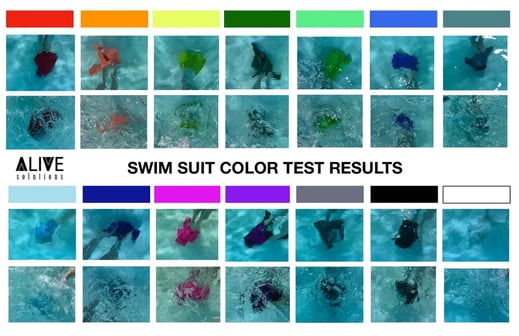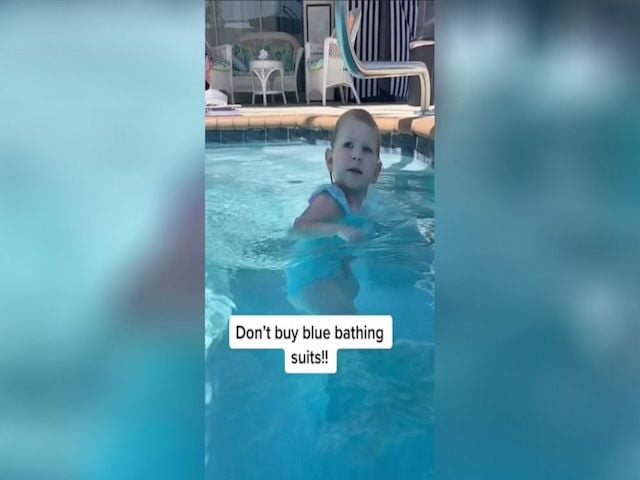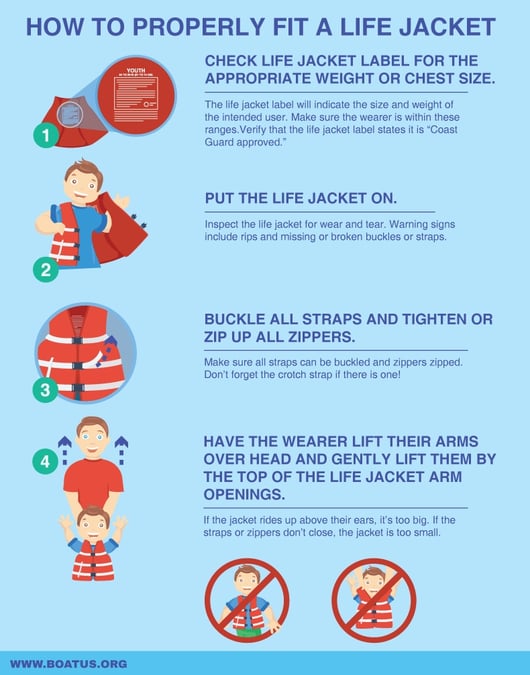Do You Need a Soils Report Before Pool Construction in LA?
The Hidden Soil Risks That Can Destroy Your Pool and Budget Why a Proper Soils Exploration Is Critical Before Building a Pool: A homeowner’s guide to...

A timeless statement predicated upon the sentiment that thoughtful style can serve looks and keep our careers afloat.
That’s all fine and dandy, but we can turn that statement on its head to protect our dearest assets: our children.
With World Drowning Prevention Day just around the corner, dressing our kids with their pool safety carries even more urgency. While the topic of drowning prevention has many layers (5 Layers of Protection, to be exact), this article will zoom in on an often neglected water safety hazard: your kids’ swimsuit color.
At J Designs Pool and Spa, we’ve spent 15 years educating our clients about water safety best practices. Protecting the most fragile among us compels our awareness initiatives for the greater Los Angeles communities we dutifully serve.
After reading this article, you will have a crystal clear vision of how to scheme against the drowning risk that looms over even the sunniest pool days with your little ones.
Pool season is year-round in California, but our Golden State claim to fame can, unfortunately, claim innocent lives in exceeding probability.
“Swimming pools are abundant in California. They are in backyards, apartment complexes, community centers, gyms, hotels, and short-term vacation rentals. Pools are areas of leisure and relaxation, sport and fitness, and for many, an important place for family and community gathering. Despite their important role in our lives, pools also carry risk. Over 100 drowning deaths and 400 non-fatal drowning events occur each year in California pools; children aged one to four years represent 27% of the deaths, 47% of non-fatal emergency department visits, and 60% of non-fatal hospitalizations,” says the California Water Safety Coalition.
In California, drowning is a leading cause of injury-related deaths among children under five. Each year, near-drowning incidents result in life-long disabilities.
The danger of drowning hits very close to home, so detailing drowning prevention strategies are a priority.
.jpg?width=433&height=650&name=California%20Drowning%20Data%20(1).jpg) Infographic courtesy of California Water Safety Coalition
Infographic courtesy of California Water Safety CoalitionMerging form and function when choosing kids’ swimsuits is consequential.
The form (color) and function (visibility underwater) were tested by an aquatic safety and risk assessment company called Alive Solutions. They tested 14 swimsuits in varying colors, first in a pool and then in a lake.
One word to describe their results: blinding.

The findings beckon a moment of reckoning for the all too common neglect of this seemingly unthreatening aspect of pool safety:
Neon won as the most visible in every category (except neon pink)
Though the darker colors show up well on a light pool bottom, they are still cautioned against because they can often be dismissed for a pile of leaves, dirt, or a shadow
The overarching point of this test being conducted was to enforce the notion that looking through water is challenging; it’s not like looking through air. Add in cloudy weather conditions or vegetation murking the waters, and that vision becomes even more distorted.
Be intentional. Be very intentional about the color swimsuit you deem acceptable for your child to wear in a pool or open water source.
As someone who, passionately dislikes wearing bright, neon colors, this finding does not pass my vibe check. Nonetheless, in the context of vulnerable children and the genuine threat of drowning, no superficial preference holds weight in keeping them safe.
Parents: tread lightly with this matter because who matters is still treading water.
The pool industry is practically synonymous with the color blue. So this best practice is going to seem a bit strange coming from the professionals voted most likely to go chasing waterfalls…. but pool safety is more important than upholding standard conventions.
In a segment about pool safety on Good Morning America, a swim instructor calls attention to the dangers of blue swimsuits and the unique risk they pose for children.
Kids can virtually disappear in water if their bathing suit too closely matches the color of any given water source they’re in. Most water sources are some abstract shade of blue, so don’t throw caution to the wind over this seemingly overzealous perspective.
Drowning is menacingly quick and innocuous. The way it has been portrayed in movies is not reality; kids bob up and down merely at the surface trying to get air; they’re not splashing around screaming for help.
Camouflage is great if you’re hiking at Joshua Tree and suddenly hear a sketchy roar coming from no discernible direction, but the abrupt invisibility that comes from blending in with water can be fatal.
 Photo courtesy of Good Morning America
Photo courtesy of Good Morning AmericaOften, the cautionary tale of those who lost children in drowning accidents is that they had no idea how insidious the grave risk truly is.
We must shift our misguided mindset around drowning always being loud and drawn out. Why? So that from now on, parents only have precautionary tales, not grief-stricken cautionary tales.
Life jackets should be worn by children and weak swimmers when on or around open bodies of water. Approved floatation devices are tested for their buoyancy and must be approved by the United States Coast Guard (USCG).
The color of lifejackets isn’t so much of an issue, as they’re usually bright orange. Rather, the safety hazard is one of unsecured buckles and ill-fitting coverage.
“You would want to have your child get in the life jacket and then you’re going to want to do a fit test,” says Jessica Winberry, prevention coordinator with THE PLAYERS Center for Child Health at Wolfson Children’s Hospital. “When you are doing that fit test, you want to put the life jacket on with all the parts that are intended. If it’s got buckles, sometimes it has a buckle that comes up through the child’s legs to buckle, all those things need to be used. Once you’ve got that life jacket on correctly, you’re going to kind of lift the child up in the life jacket around the shoulder area. If the child’s shoulders or mouth kind of slip through, it’s too big," says the National Drowning Prevention Alliance.
 Infographic courtesy of Boatus.org
Infographic courtesy of Boatus.orgAdditionally, we cannot overstate this distinction: the popular arm floaties that you see many children wearing are not a proper substitute for life jackets.
After reading this article, you can implement these practical water safety tips in the swimsuits and floatation devices you allow (and will never again allow) your kids to wear in the water.
At J Designs Pool and Spa, our enterprise is structured much like the human body; creating intricate design blueprints is the brain, building construction plans is the muscles, and our allegiance to your family’s safety is the heart. Admittedly, we wear our heart on our sleeve… which leads to our service that will tie your boutique pool and spa project together: transparency.
In that spirit of transparency, we already know that your tender parental heart only feels a smidge more equipped to guard your child against this nightmare scenario. The risk will always exist, especially living in a coastal area.
The good news is water safety education has no age limit! You can, and should start their training young. You can also take a look at “The Polar Bear Who Couldn’t, Wouldn’t Swim,” a children’s book written by The Zac Foundation for Children's Safety. They also created fun and educational activity pages based on the book to help children of all ages reinforce core water safety messages.
In the meantime, read these related articles to keep strengthening your pool safety offense:

The Hidden Soil Risks That Can Destroy Your Pool and Budget Why a Proper Soils Exploration Is Critical Before Building a Pool: A homeowner’s guide to...

Why Pool Coping Fails - How to Avoid Expensive Repairs If you’re planning a new pool or renovating an older one, it’s completely normal to feel...

Have you ever wondered why your pool company talks about “certified technicians”? Or why does Los Angeles County require strict training and testing...